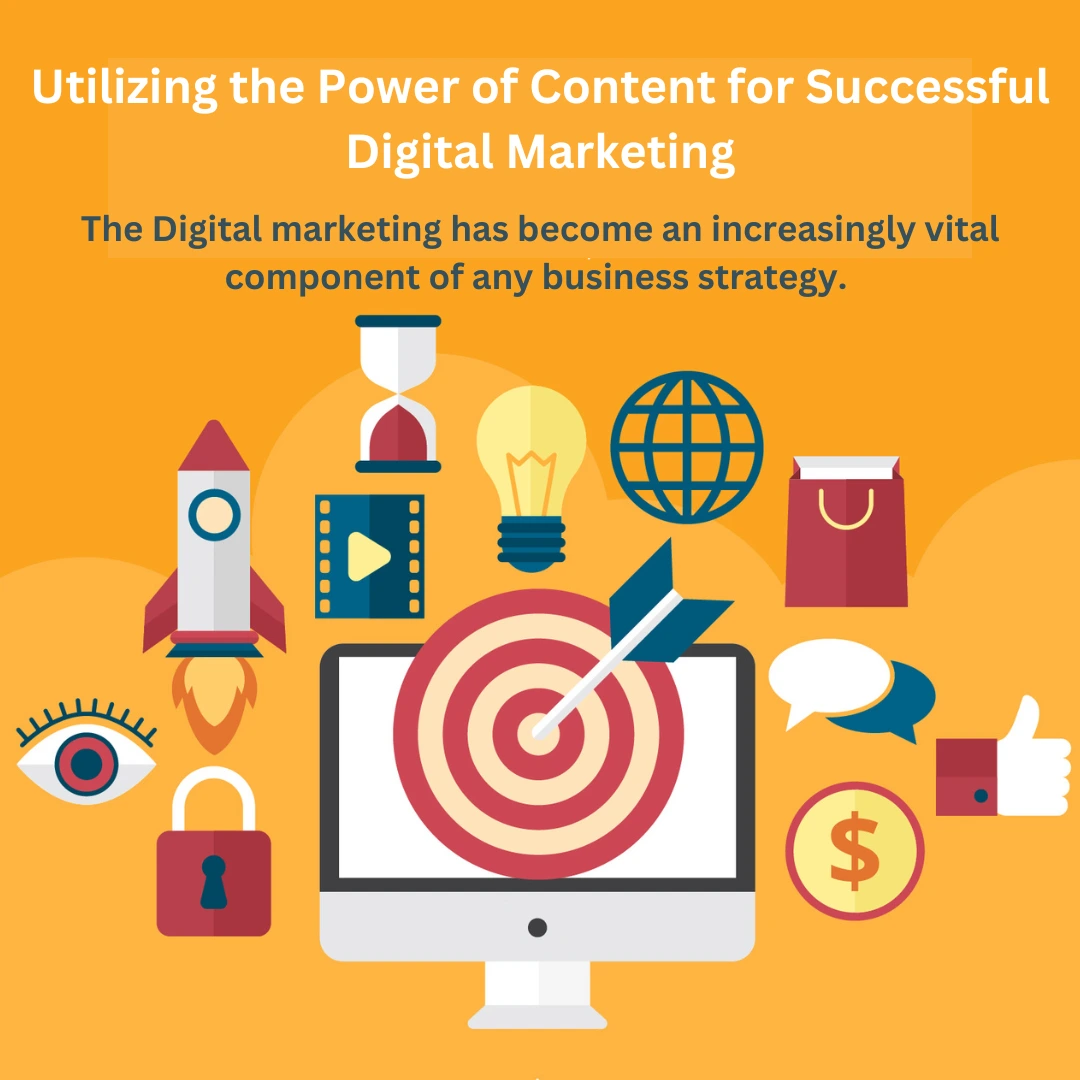In today’s digital world, businesses are continuously looking for innovative methods to reach and engage with their target audience. With the growth of the internet and social media, digital marketing has become an increasingly vital component of any business strategy. Among the various approaches available, content marketing has emerged as a powerful and successful tool. It increases traffic, creates leads, and develops brand recognition.
Businesses may position themselves as thought leaders in their field. They can create trust with potential consumers and ultimately generate more sales and income. This is acquired by providing relevant and interesting content that connects with their audience. But, developing effective content necessitates a deliberate strategy. This considers your target demographic, search engines, and social media platforms.
In this context, this article examines how organizations may effectively use the power of content to fulfill their digital marketing goals, such as defining their target audience, developing quality content, optimizing for search engines, promoting on social media, and assessing their outcomes.

Here are some strategies for harnessing the power of content for effective digital marketing:
Identifying Your Target Market
Identifying your target audience is one of the most crucial aspects of developing great content. Knowing your target audience’s goals, interests, and pain areas is essential for developing content that will appeal to them. You may adapt your material to their preferences and guarantee that your message is well received by doing so.
Create buyer personas to begin defining your target audience. Based on research and data about your existing consumers, a buyer persona is a semi-fictional picture of your ideal customer. A strong buyer persona comprises both demographic and psychographic information. This includes age, gender, and income, as well as interests, values, and motivations.
Once you identify your target audience, you can develop content that speaks directly to their wants and interests. For example, if your target audience is interested in fitness and well-being. You may offer content on nutritious foods, training routines, and mindfulness techniques.
Generating Useful Content
The secret to successful content marketing is to provide great material that adds actual value to your audience. This may be accomplished in a variety of ways, such as teaching, entertaining, or motivating your audience.
One effective strategy to generate great content is to provide in-depth, authoritative material on a given topic. This may be a lengthy blog post, a whitepaper, or an e-book. By offering extensive information and views on a topic, you may position yourself as a thought leader in your area. Also, you can gain the confidence of your audience.
Creating multimedia material like videos, infographics, and podcasts is another useful strategy. These forms, which are more engaging and shareable than textual material, can help you reach a larger audience.
Furthermore, it is critical to provide content that is practical and beneficial to your target audience. This may be a step-by-step guide, a checklist, or a template that your audience can use to solve an issue or reach a goal.
Search Engine Optimization
Search engine optimization (SEO) is the practice of improving the visibility of your content on search engine results pages (SERPs). It is a critical component of website development as it ensures that your website can be found and indexed by search engines. By optimizing your content for SEO, you may boost organic traffic to your website and attract more prospective consumers.
Begin by conducting keyword research in order to improve your content for SEO. This entails discovering and inserting the keywords and phrases that your target audience is looking for into your content. Employ these keywords in your headlines, subheadings, body text, meta descriptions, and alt tags, as well as in your meta descriptions and alt tags.
Also, ensure that your information is well-structured and easy to read. Employ brief paragraphs, subheadings, and bullet points to break up your information and make it more scannable. This can assist to improve your user experience and retain people on your site longer.
Marketing Your Content on Social Media
Social media networks are an excellent approach to marketing your content and reaching a larger audience. You may improve traffic to your website, enhance interaction with your audience, and raise brand awareness by sharing your content on social media.
To market your content on social media, first, discover the channels where your target audience is most engaged. Depending on your sector and target demographic, this may be Facebook, Twitter, LinkedIn, or Instagram.
Analyze your results:
It is critical to track your outcomes in order to establish the efficacy of your content marketing approach. Analytic tools may be used to track your website’s traffic, engagement, and conversion rates. This will assist you in determining what is and is not working, as well as making modifications to better your plan.
Conclusion:
Content marketing is a strong technique that may help organizations reach their digital marketing objectives, such as driving traffic, generating leads, and increasing brand recognition. Businesses may successfully leverage the power of content marketing to connect with their audience and drive more sales and income by defining their target audience, developing great material, optimizing for search engines, and promoting on social media.
Since, it is critical to approach content marketing strategically, taking into account your target audience’s demands and interests, as well as search engines and social media platforms. Businesses may generate content that speaks directly to their target audience while also efficiently promoting their brand this way. As digital marketing evolves, content marketing will continue to be a vital component of any successful strategy, allowing businesses to engage with their audience and deliver actual results.